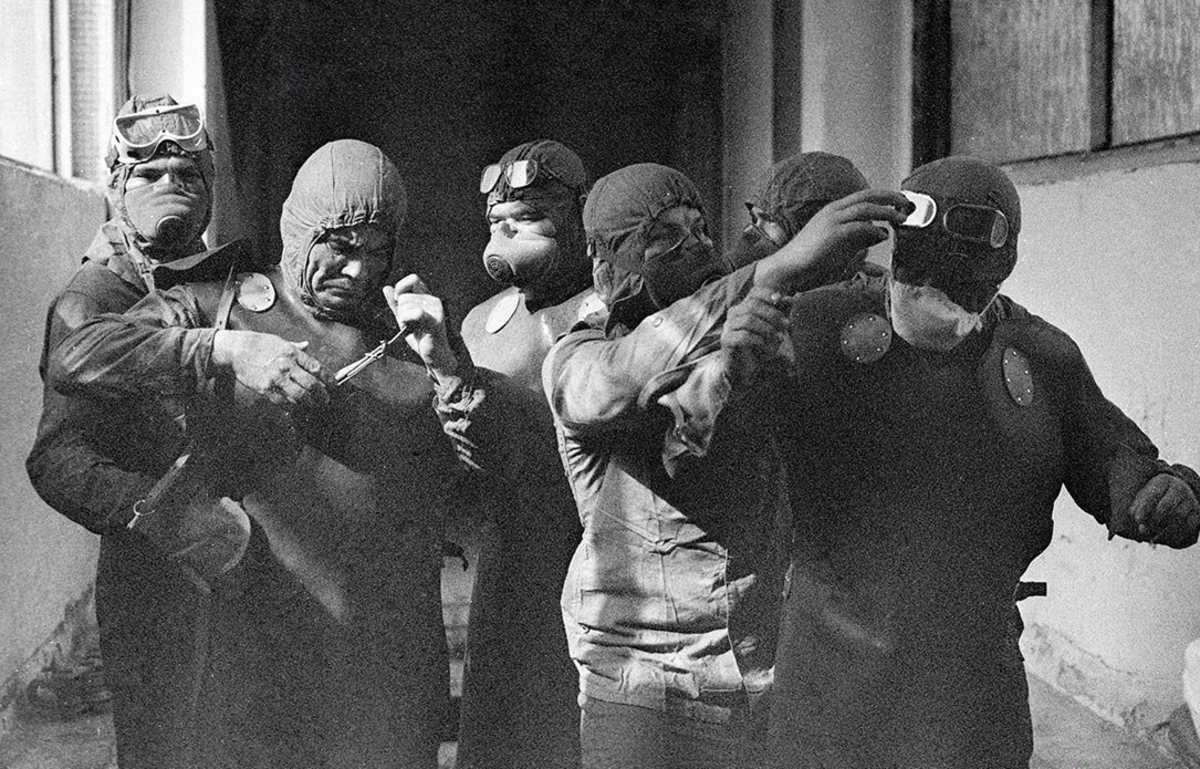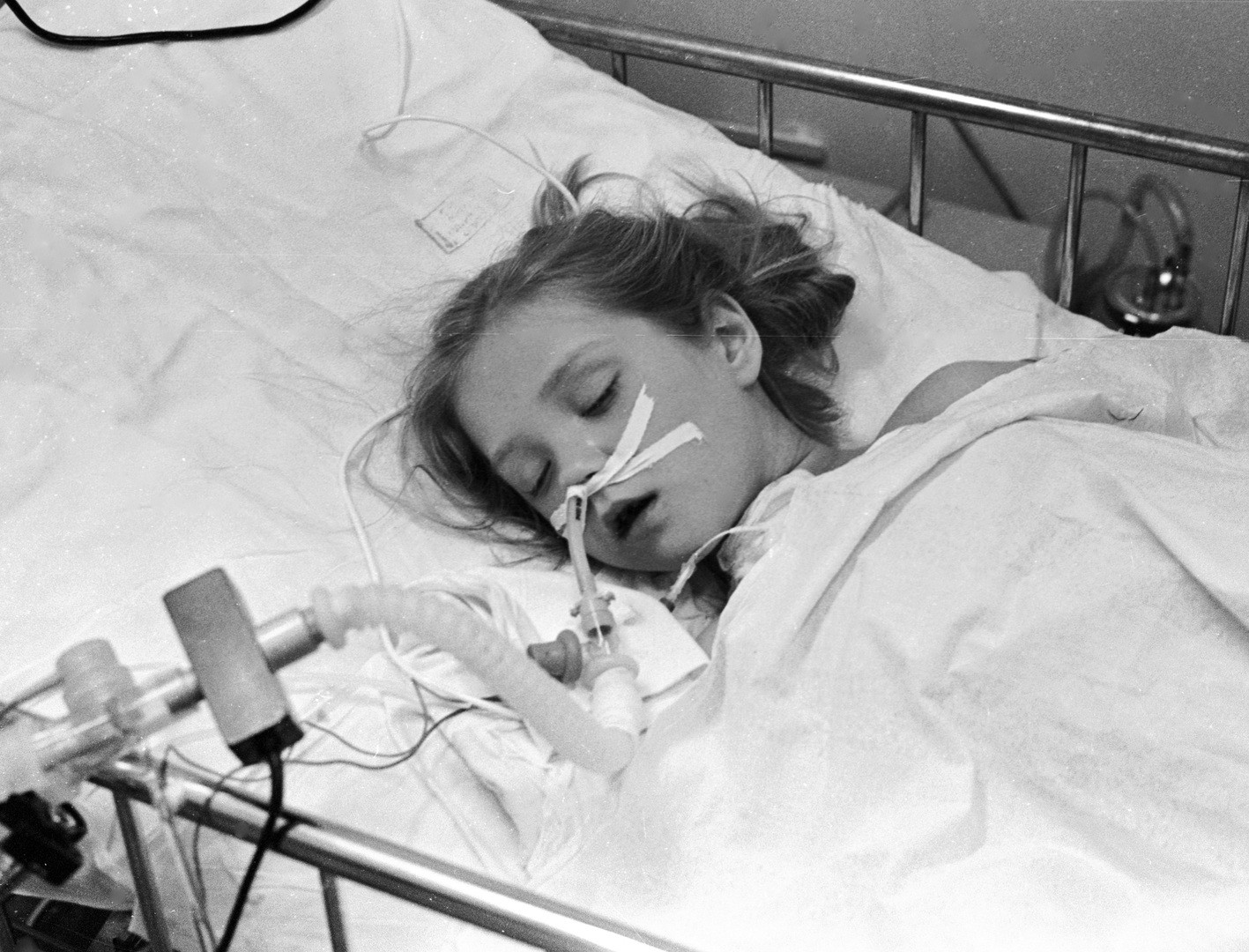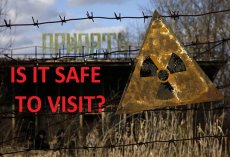The victims of the accident
It is hard to get the exact number. Sure, some of the staff at ChNEPP and firefighters were harmed the most. There were those poisoned to death by radiation during theit heroic effort to save others. Those heroes are resting at the Mitinskoye Cemetery in the heart of Moscow. Their very bodies hat to be hermetically sealed and buried under concrete since their radiation level is too high.
The radiation cloud caused the biggest damage to the neighboring town Pripyat. The whole settlement was created only for those employed at the and was situated just 3 kilometers far from it. When the blast happened, authorities preferred not to inform 50 thousand citizens about the danger of nuclear pollution. Tragically, too many citizens did not receive the necessary dose of iodine that could help to prevent significant radiation poisoning which was exceeded by 1000 times compared to what should be regarded as normal. People of Pripyat began to leave their beloved homes only a day later — at midday on April, 27, 1986. People were allowed to bring along all the necessary things. Government officials released calming promises that their department is temporary and will unlikely last for more than 3 days. However, many were already poisoned heavily. Some documents note that the Chernobyl catastrophe directly or indirectly caused death of more than 600 thousand people. Official documents classify all of the victims and put them in multiple classes. One of the the biggest groups (200-240 thousand people) comprises liquidators — emergency response groups, army men dealing with harmful pollutants, firefighters and policemen. The other group (around 116 thousand people) includes those inhabited neighboring regions. Also, circa 230 thousand were later evacuated from adjacent territories also contaminated by the radiation.

Mortality
According to UNSCEAR (2000), 134 liquidators received radiation doses high enough to be diagnosed with acute radiation sickness (ARS). Among them, 28 persons died in 1986 due to ARS. Other liquidators have since died but their deaths could not necessarily be attributed to radiation exposure.
An increased number of cancer deaths can be expected during the lifetime of persons exposed to radiation from the accident. Since it is currently impossible to determine which individual cancers were caused by radiation, the number of such deaths can only be estimated statistically using information and projections from the studies of atomic bomb survivors and other highly exposed populations. It should be noted that the atomic bomb survivors received high radiation doses in a short time period, while Chernobyl caused low doses over a long time. This and other factors, such as trying to estimate doses people received some time after the accident, as well as differences in lifestyle and nutrition, cause very large uncertainties when making projections about future cancer deaths. In addition, a significant non-radiation related reduction in the average lifespan in the three countries over the past 15 years caused by overuse of alcohol and tobacco, and reduced health care, have significantly increased the difficulties in detecting any effect of radiation on cancer mortality.

Although there is controversy about the magnitude of the cancer risk from exposure to low doses of radiation, the US National Academy of Sciences BEIR VII Committee, published in 2006, a comprehensive review of the scientific evidence, and concluded that the risk seems to continue in a linear fashion at lower doses without a threshold (this is called the “linear no-threshold” or LNT model). However, there are uncertainties concerning the magnitude of the effect, particularly at doses much lower than about 100 mSv. The Expert Group concluded that there may be up to 4 000 additional cancer deaths among the three highest exposed groups over their lifetime (240 000 liquidators; 116 000 evacuees and the 270 000 residents of the SCZs). Since more than 120 000 people in these three groups may eventually die of cancer, the additional cancer deaths from radiation exposure correspond to 3-4% above the normal incidence of cancers from all causes.[1]

Projections concerning cancer deaths among the five million residents of areas with radioactive caesium deposition of 37 kBq/m2 in Belarus, the Russian Federation and Ukraine are much less certain because they are exposed to doses slightly above natural background radiation levels. Predictions, generally based on the LNT model, suggest that up to 5 000 additional cancer deaths may occur in this population from radiation exposure, or about 0.6% of the cancer deaths expected in this population due to other causes. Again, these numbers only provide an indication of the likely impact of the accident because of the important uncertainties listed above.
Chernobyl may also cause cancers in Europe outside Belarus, the Russian Federation and Ukraine. However, according to UNSCEAR, the average dose to these populations is much lower and so the relative increase in cancer deaths is expected to be much smaller. Predicted estimates are very uncertain and it is very unlikely that any increase in these countries will be detectable using national cancer statistics.
[1] During the preparation of the article were used the materials of the site http://www.who.int/ionizing_radiation/chernobyl/backgrounder/en/








